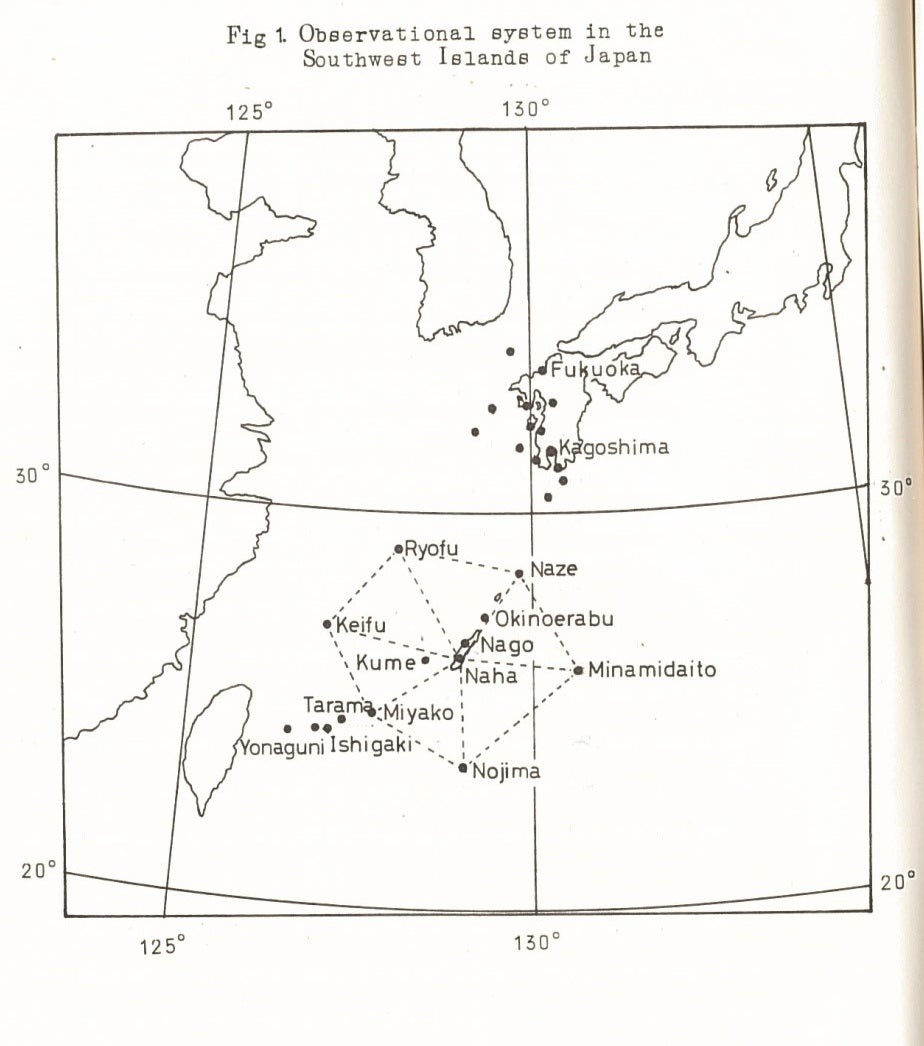AMTEX
Air Mass Transformation Experiment
The Air Mass Transformation Experiment (AMTEX) was organized and implemented by the Japanese as a Global Atmospheric Research Program (GARP) Subprogram on air-surface interaction at a time and location of large transfer of energy from the sea to the atmosphere. The field phase was conducted over the East China Sea within a 300 km hexagonal array of observation stations centered at Okinawa during the last two weeks of February in both 1974 and 1975. This area is an excellent location for the study of air mass modification due to large air-sea temperature differences that occur during winter.
Besides Japan, Australia, Canada, and the United States also participated in this international experiment that investigated the processes by which heat, moisture, and momentum are transferred from the ocean surface through the boundary layer and into the overlying free atmosphere in a region of large temperature contrast between the warm, northward flowing Kuroshio (Japan Current) and relatively cold, southward-flowing continental air. The resulting transfer of energy from the ocean fuels the development of atmospheric disturbances on several interacting scales: individual cumulus clouds (1-10 km), clusters of clouds organized into meso-scale patterns (10-100 km), medium-scale cyclonic disturbances (~ 1000 km), and large planetary-scale disturbances (> 3000 km). In the area around the Southwest Islands, meso- and medium-scale disturbances develop most frequently, but in practice, few operational observations are available. Many disturbances which develop in this area move eastwards and seriously influence the weather over Japan.
Scientific Objectives
The specific scientific objectives of AMTEX can be summarized as follows:
- Surface Fluxes – Study the distribution of surface fluxes of momentum, heat, and water vapor over the whole project domain and to further the fundamental understanding of the physical mechanisms of transfer processes in the surface boundary layer;
- Convergence and divergence of fluxes in the Planetary Boundary Layer – Clarify the three-dimensional dynamical and thermal structure of the Planetary boundary layer;
- Convective Clouds – Study the processes of vertical transfer by cumulus convection through which energy and momentum are redistributed between the boundary layer and the free atmosphere; and
- Relationships between generation of meso- and medium-scale disturbances and energy supply from the underlying surface – Clarify the role which energy supply from the sea surface plays in the generation of Meso- and medium-scale disturbances. Such disturbances often generate and develop over an area where the air mass transformation is active in the lower troposphere.
Observations
| Aircraft | NCAR Buffalo |
|---|---|
| Radar | 6 land-based routine radars (5.7 cm) including 2 ship-based radars (Ryofu Maru and Keifu Maru) |
| Ship | Ojika, Ryofu Maru, Keifu Maru |
| Surface | Routine synoptic observations in and around the project domain |
| Surface | Special tower observations at Okinawa, Miyako, and Tarama Islands |
| Upper Air | Routine and enhanced Rawinsonde observations including special releases from 3 ships |
Map
- EOL Archive NCAR/EOL/DMS
